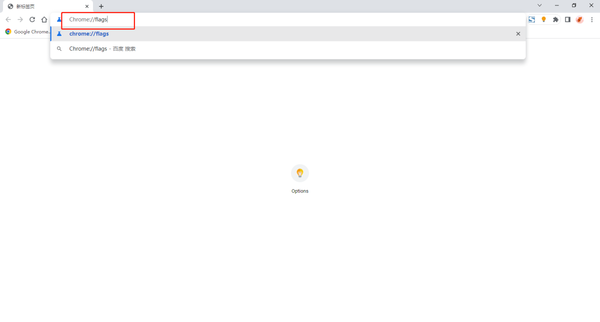 Operation and Maintenance
Operation and Maintenance Safety
Safety Analysis of examples of bypassing restrictions and accessing Google's internal management systems
Analysis of examples of bypassing restrictions and accessing Google's internal management systems
Cluees
One day, while digging for Google vulnerabilities, I discovered some IP addresses of Google’s own services from public vulnerabilities. Addresses, at first, I really didn’t know what these IP addresses could be used for.
I first checked these IP addresses, and then further discovered that they included some internal Google IPs. I suddenly remembered that recently, my friend KL SREERAM reported a vulnerability related to Google's internal IP, and another friend Vishnu reported a vulnerability that used Google subdomains to access the control panel. Currently, these two vulnerabilities have been fixed by Google, and the related internal IP addresses are no longer accessible from the Internet.
But now, I have several Google internal IP addresses in front of me, and I have to find a way to see if I can bypass the restrictions and achieve access.
flash of inspiration
Just when I was thinking hard about how to bypass Google’s security restrictions, I thought, “Can I ask Google itself how to bypass its own restrictions?”, hahahaha, Google it. So, I searched a lot of "methods to bypass Google IP restrictions" on Google. An article with the path /blog/forum/comments revealed that we need to use Google Access Proxy, which is Google's own access proxy. To implement this approach, hey, how can an individual have such agency? It seems difficult.
So, I continued to search and search. At this time, the power in my room suddenly went out, and the battery of my laptop was not plugged in. At this time, I felt as if ten thousand horses were flying through my heart. Hey, I will not give up, I will continue to find a way to achieve it!
The only way to continue Google is to use my mobile phone. At this time, because I like to use Chrome, out of curiosity, I tried to open one of the IPs in the Google browser Chrome on my mobile phone. WTF, it actually appeared. An HTTP login page is simply hard to find, and it takes no effort to get it.
Without entering the login credentials, I just clicked the LOGIN button on the page to take a look. This is amazing, and it actually jumped to a page containing many buttons and options.... ., a minute later, I realized that this was a Google product management page. I was on the Google intranet and before I could recover I accessed Google’s internal product management page!
The following is Youtube’s Youtube satellite live broadcast management page:

The following is the YouTube TV service management page:

There is no way out after all the difficulties.
After a while, the phone rang. I want to open that IP address with my computer, but I can't open the login page anyway, exactly the same as on my phone. I'm a little confused... Why can it work on my mobile phone but not on my computer?
Regardless, I quickly wrote a POC on my phone and submitted it to the Google security team. Five hours later, I received a vulnerability confirmation response from Google. They also praised this as a great vulnerability. I am very happy. The awesome Google in Silicon Valley responded to my vulnerability in Trivandrum, India. The loophole novice.
The Google security team really wanted to know which IP or proxy I used as a springboard to access its internal management system, but I was completely confused about it, so I wanted to try again. Then do some in-depth analysis and study.
流夜花明 Another Village
2 hours later, I found the reason for entering Google’s internal management system. The reason for all this is that the Data saver extension for mobile Chrome browser is installed and enabled on my phone.
In 2015, Google launched a very useful new extension "Data Saver" for the Chrome browser. Its function is as the name suggests, which can save users data usage when browsing. This extension uses Google's data compression proxy service provides traffic-optimized pages to browsers for streamlined browsing. This feature of the mobile version of Chrome is built directly into the browser, and users only need to turn on the Data Saver function in the settings.
The entire access process to Google's internal system using the Data Saver plug-in is roughly as follows:

The agent in the middle of the above picture is the "proxy used by the Data Saver plug-in" "Google Data Compression Proxy Service" is what this proxy service helps me. Similarly, when I install and enable the Data Saver plug-in in the Chrome browser on my laptop, I can also access Google's internal systems. So here’s the problem! In other words, anyone can access Google's intranet as long as they install and enable the Data Saver plug-in function in the Chrome browser.
So, I responded to Google with this analysis of the reasons. Soon after half an hour, Google responded to me.

Bug Bounty

The above is the detailed content of Analysis of examples of bypassing restrictions and accessing Google's internal management systems. For more information, please follow other related articles on the PHP Chinese website!
 如何在Google Sheet中为图例添加标签Feb 19, 2024 am 11:03 AM
如何在Google Sheet中为图例添加标签Feb 19, 2024 am 11:03 AM本文将演示如何在GoogleSheet中为图例添加标签,这些标签侧重于单个事物,提供名称或标识。图例解释了事物的系统或组,为您提供相关的上下文信息。如何在GoogleSheet中为图例添加标签有时候,在使用图表时,我们想要让图表更易于理解。通过添加恰当的标签和图例,可以实现这一目的。接下来,我们将介绍如何在Google表格中为图例添加标签,让您的数据更加清晰明了。创建图表编辑图例标签的文本我们开始吧。1]创建图表要标记图例,首先,我们必须创建一个图表:首先,在GoogleSheets的列或行中输
 Google Pixel 9 and Pixel 9 Pro rumoured to gain Creative Assistant AI upon releaseJun 22, 2024 am 10:50 AM
Google Pixel 9 and Pixel 9 Pro rumoured to gain Creative Assistant AI upon releaseJun 22, 2024 am 10:50 AMCurrently, four new Pixel smartphones are anticipated to land this autumn. To recap, the series is rumoured to feature thePixel 9 and Pixel 9 Pro at launch. However, the Pixel 9 Pro will be a rival to the iPhone 16 Pro rather than a Pixel 8 Pro (curr
 优化谷歌浏览器下载速度的技巧与方法Dec 27, 2023 pm 03:42 PM
优化谷歌浏览器下载速度的技巧与方法Dec 27, 2023 pm 03:42 PM在现代社会中,网络已经成为我们获取信息、分享资源和进行日常活动的主要方式。其中,文件下载是我们经常需要进行的操作之一,无论是从个人电脑到移动设备,还是从互联网服务器到本地存储设备。然而,快速稳定的文件下载可能会受到许多因素的影响,包括网络连接速度、服务器响应时间、浏览器性能等。今天,我们将重点讨论如何通过优化谷歌浏览器来提高文件下载速度。谷歌浏览器无法启动更新检查的解决方法1、打开谷歌浏览器,在地址栏输入【Chrome://flags】后按回车,进入到Chrome的实验功能中。 2、在搜索栏中搜
 Google AI announces Gemini 1.5 Pro and Gemma 2 for developersJul 01, 2024 am 07:22 AM
Google AI announces Gemini 1.5 Pro and Gemma 2 for developersJul 01, 2024 am 07:22 AMGoogle AI has started to provide developers with access to extended context windows and cost-saving features, starting with the Gemini 1.5 Pro large language model (LLM). Previously available through a waitlist, the full 2 million token context windo
 Google app beta APK teardown reveals new extensions coming to Gemini AI assistantJul 30, 2024 pm 01:06 PM
Google app beta APK teardown reveals new extensions coming to Gemini AI assistantJul 30, 2024 pm 01:06 PMGoogle's AI assistant, Gemini, is set to become even more capable, if the APK teardown of the latest update (v15.29.34.29 beta) is to be considered. The tech behemoth's new AI assistant could reportedly get several new extensions. These extensions wi
 顺手训了一个史上超大ViT?Google升级视觉语言模型PaLI:支持100+种语言Apr 12, 2023 am 09:31 AM
顺手训了一个史上超大ViT?Google升级视觉语言模型PaLI:支持100+种语言Apr 12, 2023 am 09:31 AM近几年自然语言处理的进展很大程度上都来自于大规模语言模型,每次发布的新模型都将参数量、训练数据量推向新高,同时也会对现有基准排行进行一次屠榜!比如今年4月,Google发布5400亿参数的语言模型PaLM(Pathways Language Model)在语言和推理类的一系列测评中成功超越人类,尤其是在few-shot小样本学习场景下的优异性能,也让PaLM被认为是下一代语言模型的发展方向。同理,视觉语言模型其实也是大力出奇迹,可以通过提升模型的规模来提升性能。当然了,如果只是多任务的视觉语言模
 Leaked Google Pixel 9 adverts show new AI features including \'Add Me\' camera functionalityJul 30, 2024 am 11:18 AM
Leaked Google Pixel 9 adverts show new AI features including \'Add Me\' camera functionalityJul 30, 2024 am 11:18 AMMore promotional materials relating to the Pixel 9 series have leaked online. For reference, the new leak arrived shortly after 91mobiles shared multiple images that also showcased the Pixel Buds Pro 2 and Pixel Watch 3 or Pixel Watch 3 XL. This time
 悄无声息,Google已禁止Colab上的Deepfake项目Apr 08, 2023 pm 07:11 PM
悄无声息,Google已禁止Colab上的Deepfake项目Apr 08, 2023 pm 07:11 PM有消息显示,Google已于近日悄悄禁止了其在 Colaboratory(Colab)服务上的深度伪造(Deepfake)项目,这代表以Deepfake为目的大规模利用平台资源的时代或已画上句号。众所周知,Colab是一个在线计算资源平台,允许研究人员直接通过浏览器运行Python代码,同时使用包括GPU在内的免费计算资源来支持自己的项目。正由于GPU的多核特性,Colab是类似Deepfake模型机器学习项目或执行数据分析理想选择。经过一定训练,人们将Deepfake技术用于在视频片段中交换面


Hot AI Tools

Undresser.AI Undress
AI-powered app for creating realistic nude photos

AI Clothes Remover
Online AI tool for removing clothes from photos.

Undress AI Tool
Undress images for free

Clothoff.io
AI clothes remover

AI Hentai Generator
Generate AI Hentai for free.

Hot Article

Hot Tools

Dreamweaver Mac version
Visual web development tools

Atom editor mac version download
The most popular open source editor

WebStorm Mac version
Useful JavaScript development tools

VSCode Windows 64-bit Download
A free and powerful IDE editor launched by Microsoft

Notepad++7.3.1
Easy-to-use and free code editor






